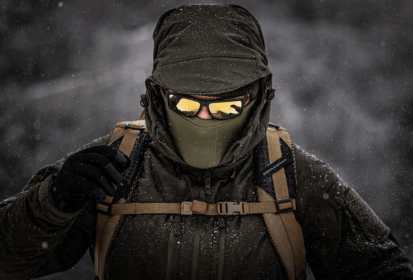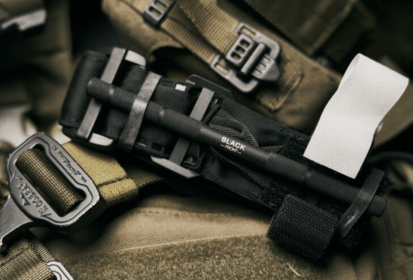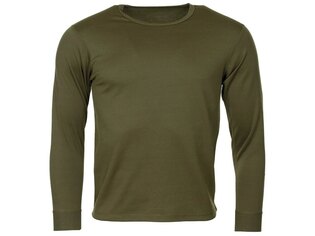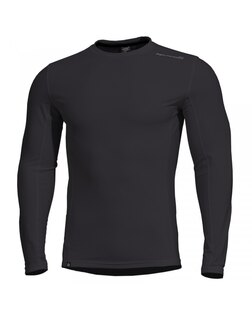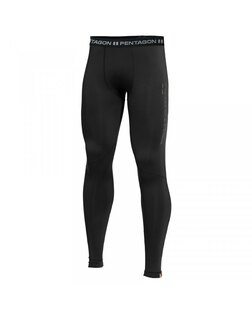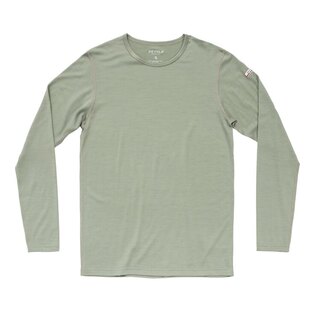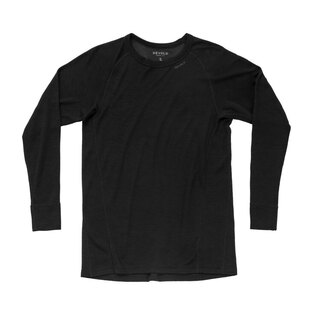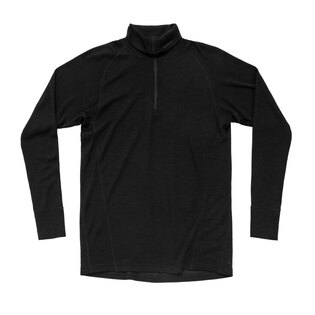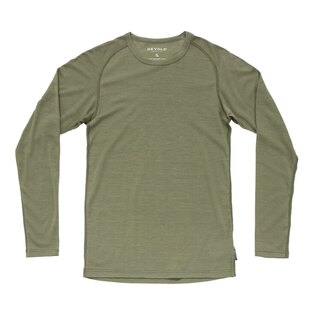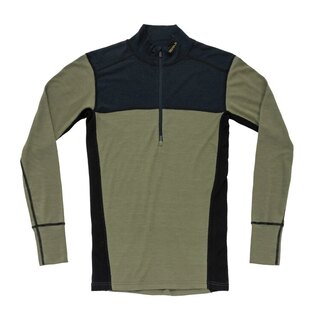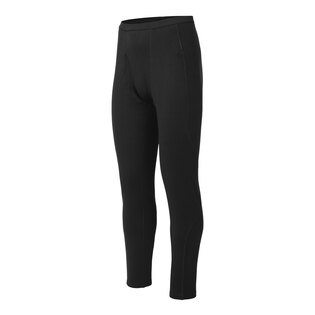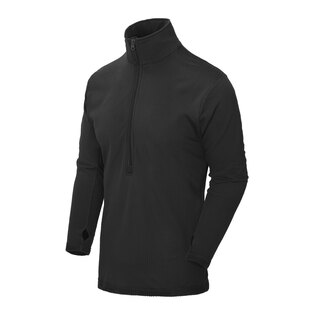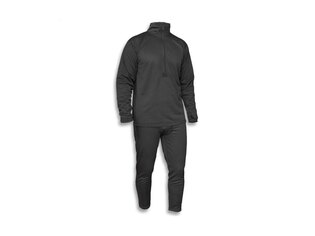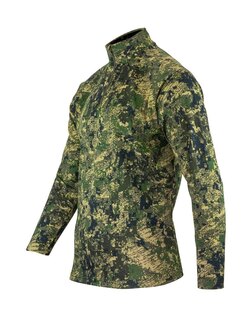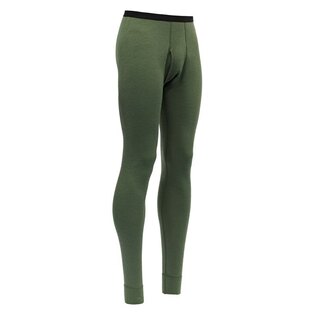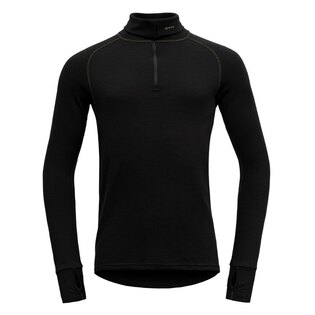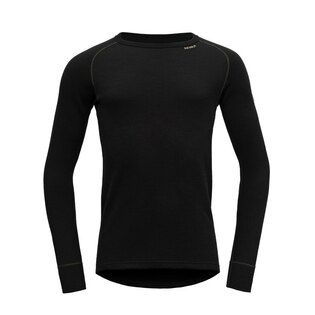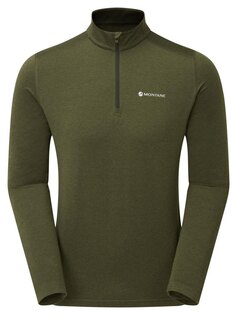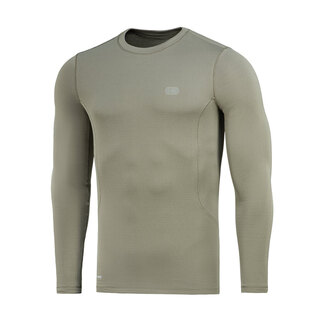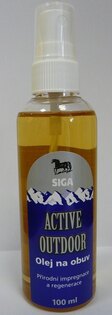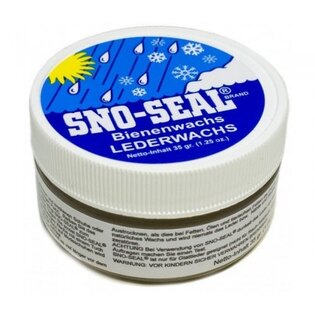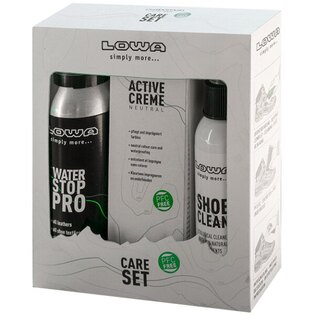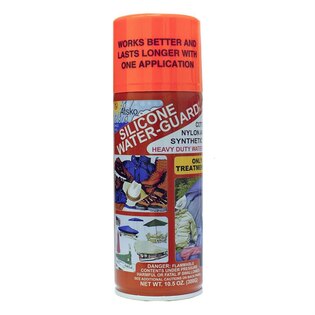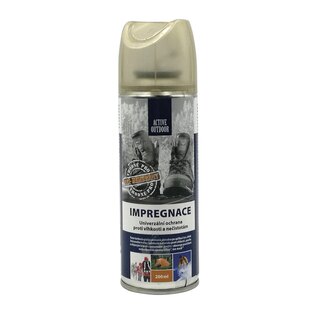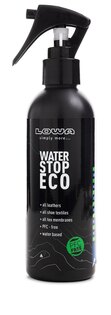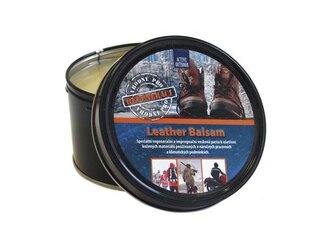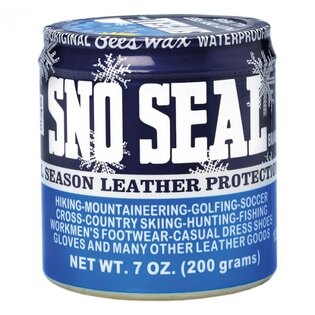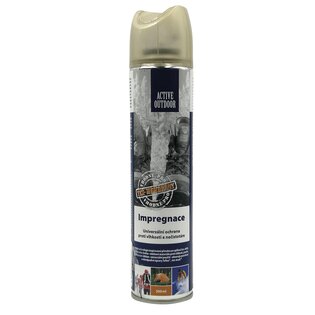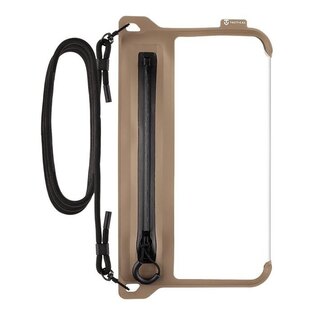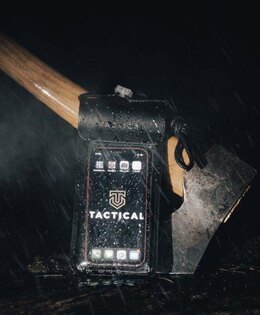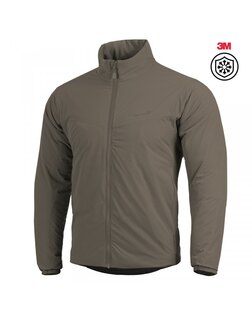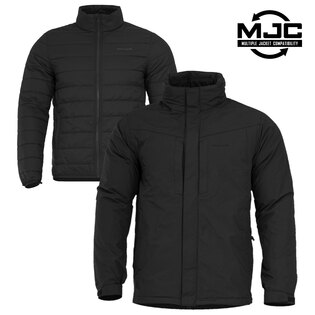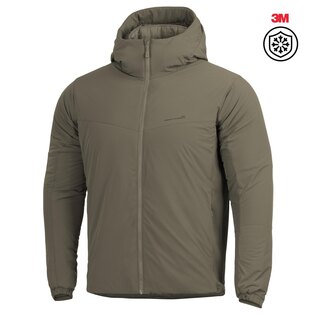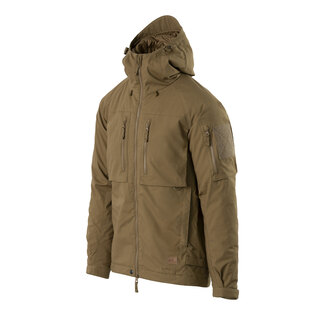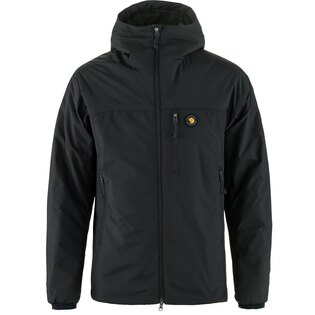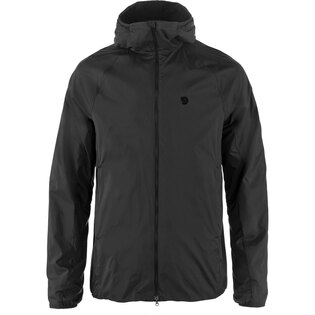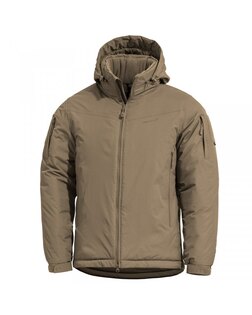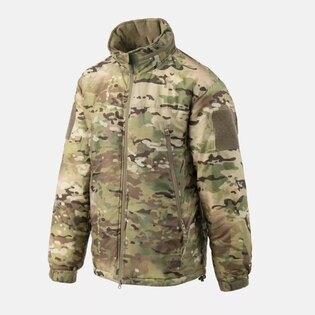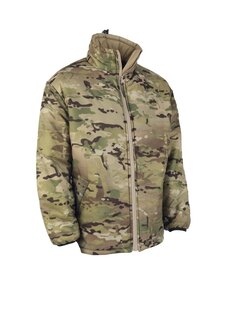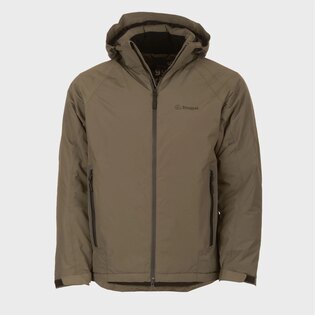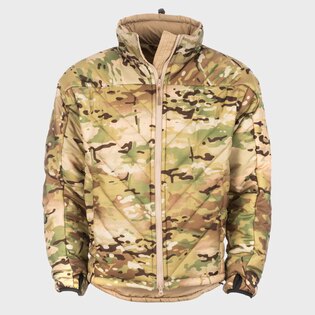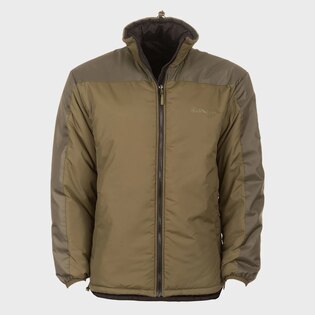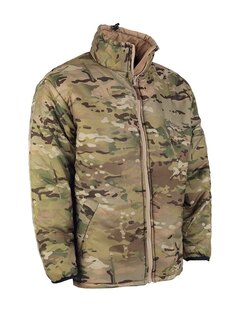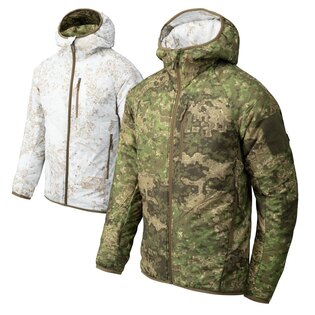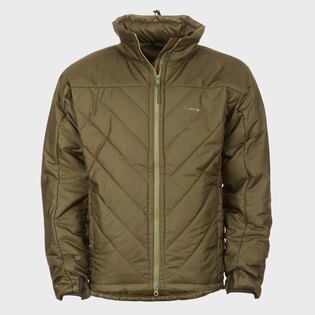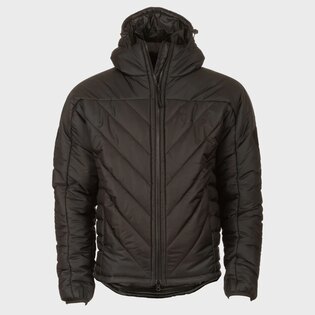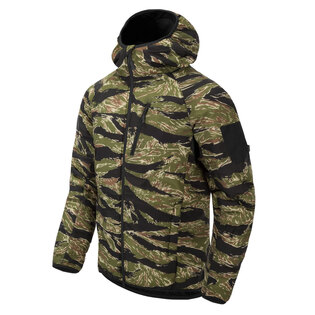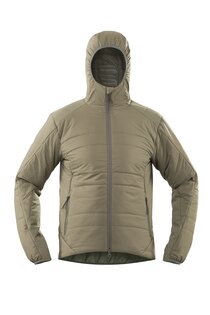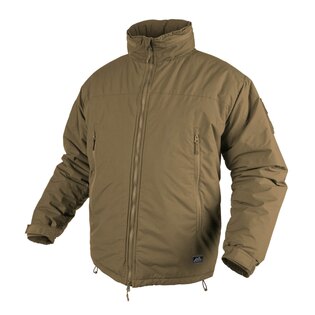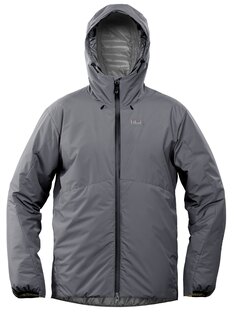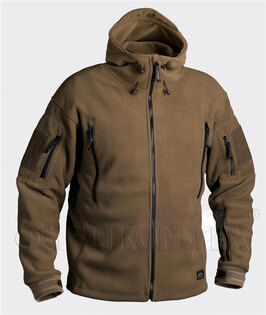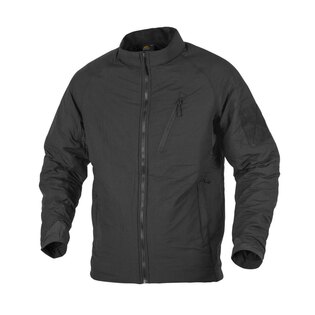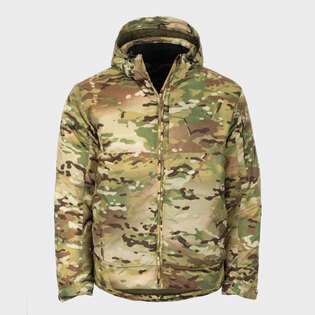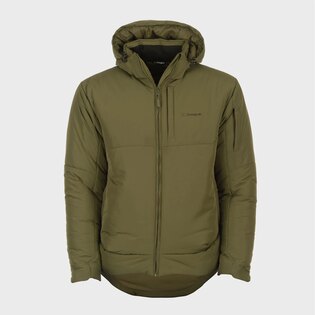10 Mistakes That Can Ruin Your Autumn Adventure
Autumn in the field rarely looks dramatic — until the weather turns, your boots get soaked, and your headlamp dies. That’s when you realise the biggest problem often isn’t your gear itself, but the small habits and overlooked details that go with it. These are what determine whether you’ll actually enjoy your autumn outing or simply endure it.
The season brings a mix of cold, dampness, and shorter daylight — and with it, new demands on both equipment and the person using it. Every unnecessary gram, wet layer, or poorly chosen material eventually makes itself known. The following mistakes are seen again and again across seasons and scenarios. Avoid them, and you’ll handle autumn with ease.
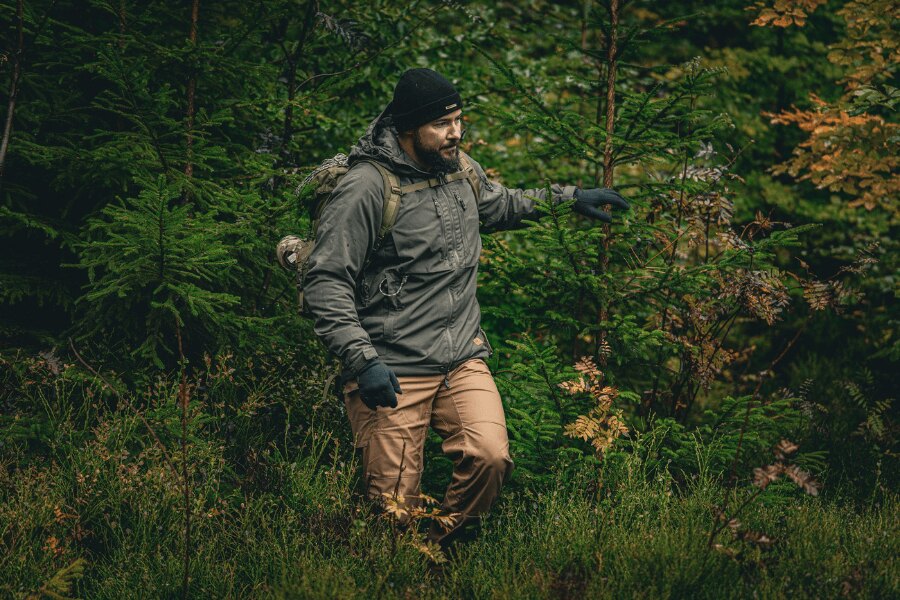
Properly assembled layering system in action: the base layer wicks moisture, the mid layer provides insulation, and the outer wind-resistant jacket with DWR coating — the Yukon winter jacket with Climashield™ Apex® insulation from Helikon-Tex® — protects against wind and drizzle.
1️⃣ Cotton Instead of Functional Layers
At first glance, cotton feels comfortable and natural. But out in the field, it behaves exactly the opposite of what you need — it absorbs sweat, dries slowly, traps moisture next to your skin, and soon starts to chill you down. Combined with wind, it’s a fast track to getting cold, losing energy, and motivation.
👉 The result: Heat loss, slower pace, and a real risk of hypothermia. Even in mild weather, a wet cotton T-shirt can drop your core temperature within minutes.
How to Do It Better
The base layer should fit close to the skin. Choose synthetic underwear or merino wool with a weight suited to your activity.
- For high output: synthetics — wick moisture efficiently and dry fast.
- For lower intensity: merino — retains warmth and comfort even when damp.
- Avoid layering cotton with performance fabrics — it cancels out the benefits of both.
Base Layer Material Comparison
| Material | What It Does / Advantages | Weak Points / Risks | Best For |
|---|---|---|---|
| Cotton | Soft to the touch, affordable, and abrasion-resistant for everyday wear. | Highly absorbent, dries slowly, traps sweat and cools rapidly; unsuitable as a performance base layer. | Off-duty or casual use without physical strain or risk of getting cold. |
| Synthetics | Very fast moisture wicking and drying, lightweight, and mechanically durable. | Can feel cold during rest, prone to odour build-up; flammable — take care around open flame. | High-intensity activities: running, fast hiking, climbing; multi-day use with limited drying time. |
| Merino Wool | Retains warmth even when damp, naturally odour-resistant, soft on skin, comfortable in variable weather. | Slower moisture transfer than synthetics, longer drying time, higher price, sensitive to poor care. | Moderate pace, long wear, cool conditions; ideal for trekking, camping, or duty with rest intervals. |
2️⃣ Poor Layer Combination
When it comes to autumn conditions, most mistakes happen in layering. Two mid-layers don’t automatically mean more warmth — more often, it means more trapped moisture and less performance.
Every layer in your clothing system has a specific role, and they only work effectively when they function together. Once one layer stops breathing, the rest of the system quickly loses efficiency.
👉 Common mistake: An insulation layer without breathability leads to overheating, trapped sweat, and that instant chill the moment you stop moving.
How to Do It – The Layering System Explained
Layering works only when each piece cooperates in moving moisture away from the body while retaining warmth. The goal isn’t more fabric — it’s a well-balanced system that manages heat and ventilation together.
- 1️⃣ Base layer – moisture management: close-fitting functional underwear (synthetic or merino). Keeps skin dry and moves sweat outward.
- 2️⃣ Mid layer – insulation: fleece, thermal sweatshirt, or lightweight synthetic fill. Traps warmth but still lets moisture escape.
- 3️⃣ Outer layer – protection: softshell or membrane jacket. Shields against wind and moisture while maintaining breathability.
💡 The system only works when all layers breathe and complement each other — in both material and fit.
3️⃣ Neglected Footwear
In wet terrain, any weakness in your boots shows up fast. Footwear takes some of the hardest punishment in your kit, yet it’s often the part people try to save money on — or forget to maintain. A worn-out sole, cracked upper, dried mud, or missing waterproof treatment all mean lost stability and wet feet. And if you head out in sneakers, it’s only a matter of time before you regret it.
👉 The result: Cold feet, blisters, and a slippery stride that turns every step into a struggle.
How to fix it
Shoes need regular maintenance – especially before winter arrives. Cleaned, dried, and impregnated shoes will last for years and will work when you need them.
- Clean and impregnate: remove mud and dust after each activity, use a suitable impregnation spray or wax according to the material.
- Check the sole: Vibram or similarly profiled soles ensure stability even on wet surfaces.
- Prefer a higher ankle cut: protects the ankle and prevents water and pebbles from getting inside.
- Material: leather provides longevity, membranes (e.g., GORE-TEX) increase water resistance and breathability.
- Replace insoles: a simple step that enhances comfort and hygiene during longer wear.
💡 A few minutes of maintenance after each outing ensures that your shoes won't let you down when the first rain or frost arrives.
4️⃣ Too Many Layers
At the start of a hike, it’s easy to overdress to avoid feeling cold — but after a few minutes of walking or climbing, the heat kicks in. You start to sweat, your clothes get soaked, and once you stop, the chill sets in fast.
One of the most common autumn mistakes is the ingrained fear of “catching a cold” (we’ve all heard it from our grandmothers). In reality, too many layers have the opposite effect — instead of protecting you, they drain your energy with constant temperature swings.
👉 The result: Overheating, soaked clothing, and rapid heat loss the moment you stop moving.
How to Do It Right
Start out feeling slightly cool — your body will warm up naturally after a few minutes of movement. The goal isn’t “extra” warmth, but a steady body temperature without overheating or unnecessary sweating.
- Less is more: layer based on your activity level, not the temperature when you leave.
- Vent fast: a zippered collar, armpit vents, or mesh openings help release heat without removing layers.
- Carry a backup layer: pack a lightweight down jacket, vest, or windbreaker for breaks and cold transitions.
- Avoid cotton sweatshirts: they soak up moisture and lose insulation quickly — fleece or synthetics work far better.
💡 It’s better to start out a little cold than to end up wet. Your body generates heat in motion, but can’t shed moisture efficiently.
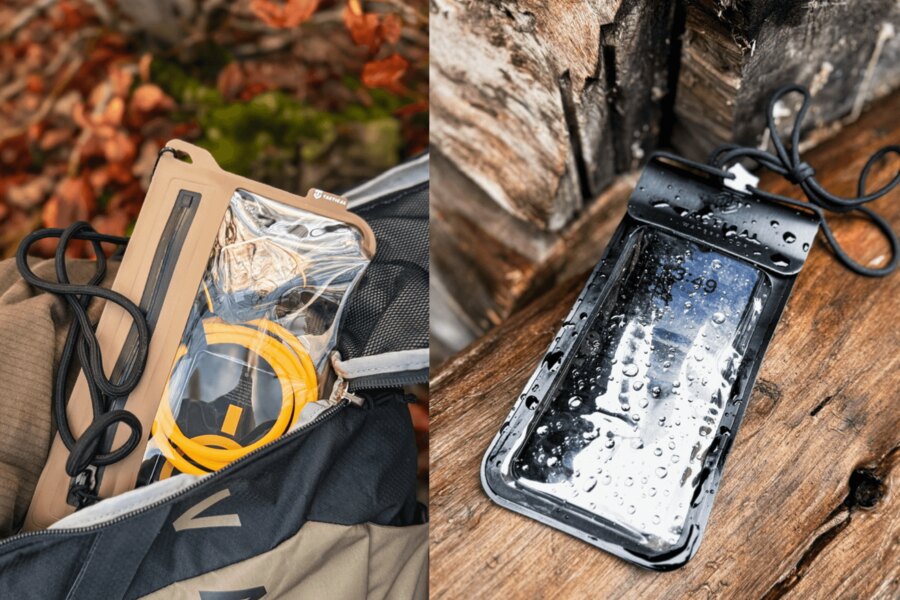
Warm calories in the field aren’t a luxury — they’re a necessity. A compact Jetboil stove heats up food or tea within minutes, helping you keep your body warm and your morale high.
5️⃣ Forgotten (or Dead) Light
As autumn progresses, daylight fades faster each week — darkness can fall long before you make it back to camp or the trailhead. Cold and wind also drain batteries far quicker than you’d expect. Relying solely on your phone’s flashlight is a gamble — in freezing or windy conditions, the battery can die within minutes.
Equally risky is a headlamp with half-dead batteries or one you forgot to recharge. When your light fails, it’s not just an inconvenience — you lose orientation, visibility for signaling, and your basic sense of safety.
👉 The result: Disorientation, slower pace, and a higher risk of injury. Once the light goes out, you can’t see the trail, your screen, or route markers — and if something happens, no one may be able to find you.
How to Handle It
- Always pack a headlamp: even for short trips. A lightweight USB-C rechargeable model with a comfortable strap takes no space but can make the difference between a safe return and trouble.
- Charge and check batteries: recharge or replace before you leave. For AA/AAA lamps, carry fresh spares. In cold weather, keep the battery close to your body.
- Power bank as backup: cold drains batteries fast. A small power bank (5,000–10,000 mAh) plus a cable for both headlamp and phone is the bare minimum if the day might run long.
- Backup light source: a mini headlamp or pocket flashlight. Redundancy matters in the field.
- Modes and signaling: use low mode for walking, high beam only briefly. Red light preserves night vision; flashing/SOS mode can serve as an emergency signal.
- Practical details: enable the lock-out to prevent accidental activation, make sure controls work with gloves, and set the right beam angle. Models from Ledlenser or Nitecore offer compact builds with an excellent power-to-runtime ratio.
6️⃣ Lack of Warm Calories and Fluids
In cold conditions, your body burns more energy — even when you’re moving slowly. Your metabolism works to maintain core temperature, and once it runs out of fuel, your performance drops, reactions slow down, and morale follows.
It usually starts subtly — fatigue, loss of focus, shivering, cold hands. Hunger and thirst set in late in cold weather, so if you’re already feeling them, you’re one step behind.
👉 The result: Lower performance, heat loss, and an increased risk of exhaustion.
How to Fix It
Calories and fluids are just as important in cold weather as proper clothing layers. Your body needs fuel to generate heat and maintain consistent performance.
- Warm drink in a thermos: tea, broth, or water with lemon and honey — supports both hydration and thermoregulation.
- Quick energy within reach: energy bar, nuts, dried fruit, or dextrose for an instant glucose boost.
- Proper snack: fats + carbohydrates (for example, bread with cheese or nut butter). Fats keep you warm, carbs keep you moving.
- Stove in your pack: a compact system like a Jetboil or wood-burning stove. A hot meal lifts both body temperature and morale.
- Hydration is key: you drink less in the cold, but the body still loses fluids through breathing. Rehydrate regularly — don’t wait until you’re thirsty.
💡 When you have energy, you stay warm — and when you’re warm, everything else works better.
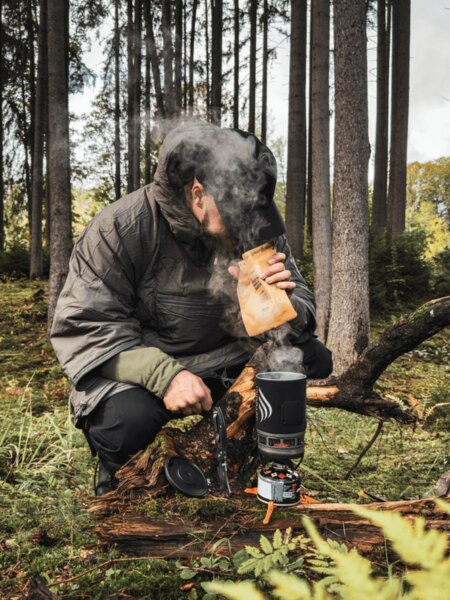
Warm calories in the field are not a luxury, but a necessity. The compact Jetboil stove can heat food or tea in a few minutes and helps keep the body warm and morale high.
7️⃣ Ignoring Wind and Moisture
The number on the thermometer can be misleading. At 10 °C with wind, it can feel as cold as freezing temperatures in calm weather. Add moisture, rain, or fog — and your body starts losing heat fast.
Wind strips away the thin layer of warm air around your body, while moisture reduces your clothing’s insulating ability. The result is rapid energy loss, a drop in body temperature, and slower movement — a combination that can quickly become dangerous in the mountains.
👉 The problem: Underestimating wind and moisture leads to heat loss, fatigue, and a serious drop in comfort.
How to Handle It
You can’t completely avoid wind and moisture, but you can limit their impact with the right protection. The key is a lightweight, breathable layer that resists both water and wind.
- Windproof jacket: a light softshell or membrane windbreaker with DWR coating repels both wind and water. Ideally with a hood and extended back panel.
- Layering done right: the outer layer protects, the inner layer wicks moisture — never the other way around.
- Hat and gloves: small details that make a big difference. Your head and hands lose heat the fastest.
- Avoid getting soaked: wet clothing loses most of its insulating ability. Always keep a spare layer in a dry bag.
- Beware of wind exposure: plan routes with shelter when it’s gusty. Even a light breeze combined with humidity can drop the perceived temperature by several degrees.
💡 It’s not about the number on the thermometer — wind and moisture decide how warm you’ll actually feel.
8️⃣ Sleeping Without Ground Insulation
Ground temperature stays below 10 °C for most of the year — and even the best sleeping bag won’t keep you warm if there’s no proper insulation between you and the ground. A sleeping bag doesn’t insulate downward; the down or synthetic fill gets compressed under your body and loses most of its insulating power.
Another common mistake is choosing a sleeping bag based on daytime temperature. When the sun is out, it’s easy to forget that nights can drop 15 °C or more. A summer bag in October will reliably wake you up shivering — no matter how nice the day was.
👉 The result: A freezing night, poor sleep, and zero recovery.
How to Fix It
In autumn, proper ground insulation and protection from air moisture are key. Even without wind or rain, your body loses heat through conduction into the cold ground and condensation from the air.
- Sleeping pad with R-value 3 or higher: the higher the R-value, the better the insulation. Combine inflatable pads with a foam layer and always place them on a groundsheet — it protects from moisture and punctures.
- Hammock with an underquilt: a great alternative that insulates from below and prevents heat loss caused by compression.
- Bivy bag or bivouac cover: use one even when it’s not raining — it shields your sleeping bag from ambient humidity and condensation.
- Choose your sleeping bag wisely: base it on expected night temperatures, not daytime warmth. For autumn, aim for “comfort + safety margin.”
- Tarp or shelter: add one as wind and rain protection, even in dry weather — it reduces radiant heat loss.
💡 Even the warmest sleeping bag won’t help if you’re lying directly on the cold ground. Ground insulation is just as important as the bag itself.
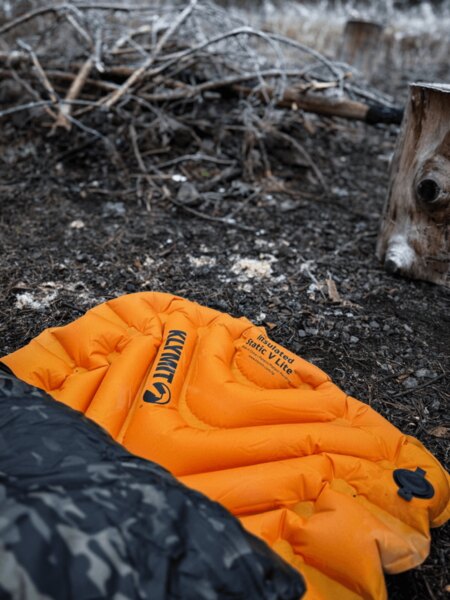
A quality sleeping pad with an insulating layer, such as the Klymit Insulated Static V Lite, forms a crucial barrier between your body and the cold ground. For complete protection, add a groundsheet underneath — it boosts comfort and extends the lifespan of your gear.
9️⃣ Underestimating Gloves and Spare Clothing
Losing dexterity means losing control. Clipping a carabiner, setting up a stove, or using your phone becomes nearly impossible with frozen hands. Cold fingers aren’t just a comfort issue — as the body’s extremities, they lose heat first when exposed to wind and moisture.
The same applies to clothing: once your base layers get soaked, they stop doing their job. Without the option to change into something dry, you risk not only discomfort but also hypothermia — which in cold conditions develops faster than you realize.
👉 The result: Loss of fine motor skills, slower reactions, and reduced overall performance.
How to Handle It
In cold weather, the details matter. A spare set of dry clothes and an extra pair of gloves can decide whether your trip stays enjoyable or turns into endurance training.
- Two pairs of gloves: lightweight tactical or work gloves for handling gear, plus an insulated backup pair in your pack.
- Waterproof storage: keep gloves and spare layers in a dry bag or ziplock — wet gear is useless gear.
- Spare shirt and socks: dry means functional. Changing after getting wet or exerting yourself helps retain warmth.
- Material matters: synthetics and merino dry faster than cotton and stay comfortable even when slightly damp.
- Gloves for the task: thin gloves for precision work, thicker ones for warmth. The combination ensures reliability.
💡 Spare gloves and dry layers aren’t a luxury — they’re small safeguards against big problems.
🔟 Ignoring the Weather and Real Conditions
Autumn weather is unpredictable. What looks like a brief shower on the radar can easily turn into an hour-long downpour accompanied by wind and a sharp drop in temperature.
Without preparation, you end up soaked, lose time and motivation — and often make poor decisions, pushing on simply because “you’re already on the trail.”
Out in the field, it’s not bravery that matters most, but the ability to read the conditions and adapt to them.
👉 The result: Soaked gear, chilling, and a loss of morale.
How to Fix It
You can’t control the weather — but you can prepare for it. Monitor current conditions, plan according to the forecast, and protect your gear so it performs even in heavy rain or strong wind.
- Radar and forecast: watch not just temperature, but also precipitation, wind, and pressure. Apps like Windy, Ventusky, or Yr.no provide a more accurate picture than a basic weather summary.
- Plan B: always have an alternative route with options for retreat, shelter, or overnight stay. Autumn weather changes fast.
- Waterproof storage: anything that must stay dry — sleeping bag, clothes, electronics — belongs in a dry bag or pack liner. It saves both effort and peace of mind.
- Essential basics: rain poncho or shell, spare socks, and a waterproof pack cover. They take up minimal space but make a major difference in comfort when it rains.
- Sense over stubbornness: if conditions worsen, shorten or end the route. Adapting to terrain and weather is a sign of experience, not weakness.
💡 Good preparation doesn’t mean fearing the weather — it means staying one step ahead of it.
Those Who Think Ahead Don’t Have to Deal With the Consequences
Autumn in the field isn’t an enemy — it simply demands more attention to detail: layering, insulation, nutrition, and an eye on the forecast. Avoid the mistakes that repeat every season, and you’ll find that even cold and damp days have their own kind of appeal.
Good gear takes away the worry, but what really counts is how you use it. Prepare for rain, wind, and darkness, and your autumn expedition will shift from a test of endurance to a comfortable, purposeful adventure — one with real style.
Readers are further interested
